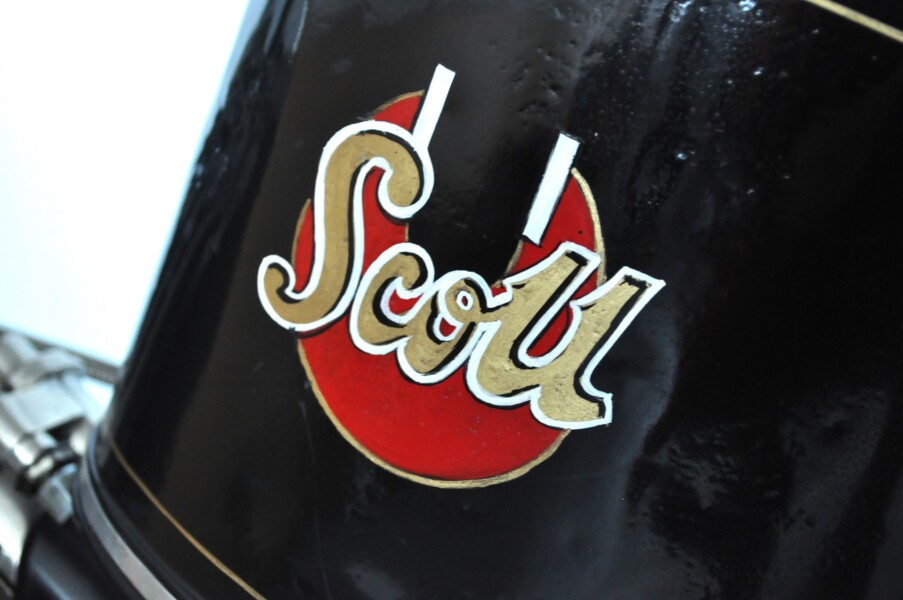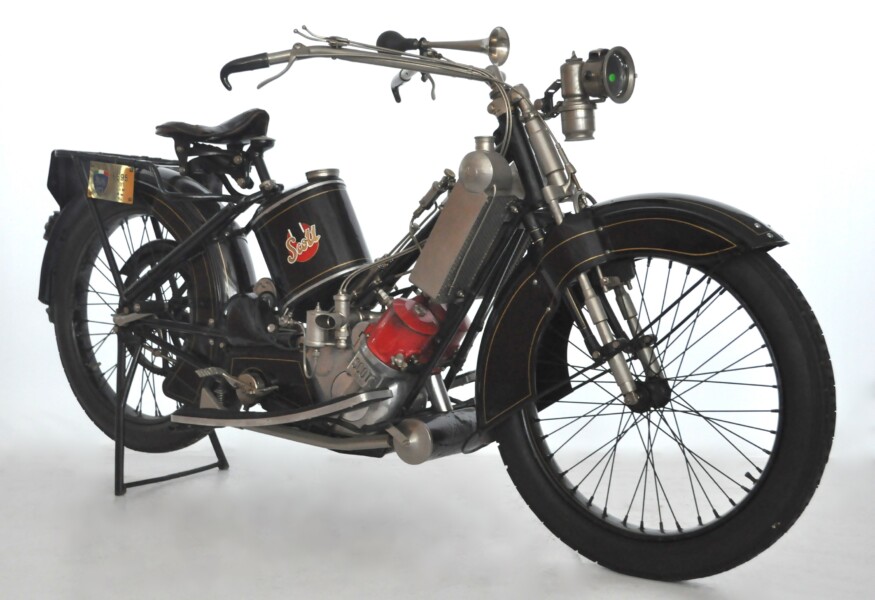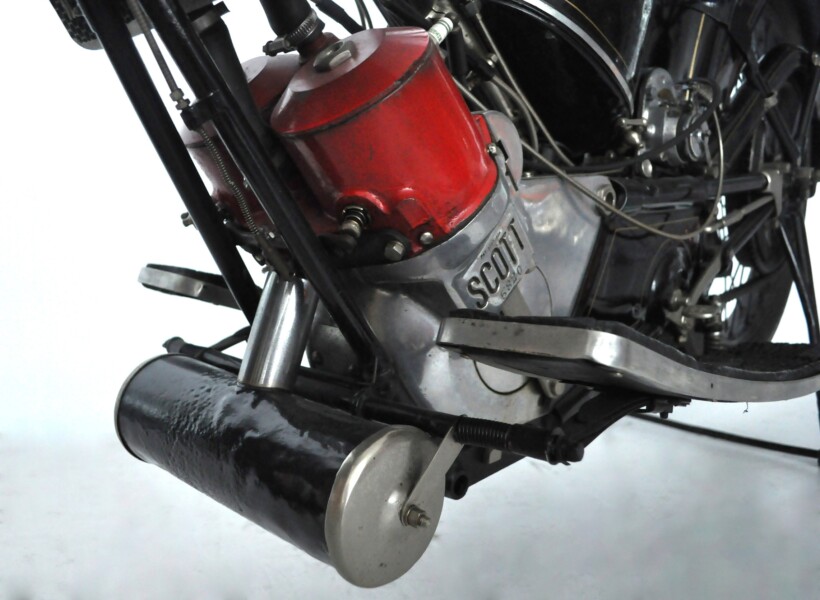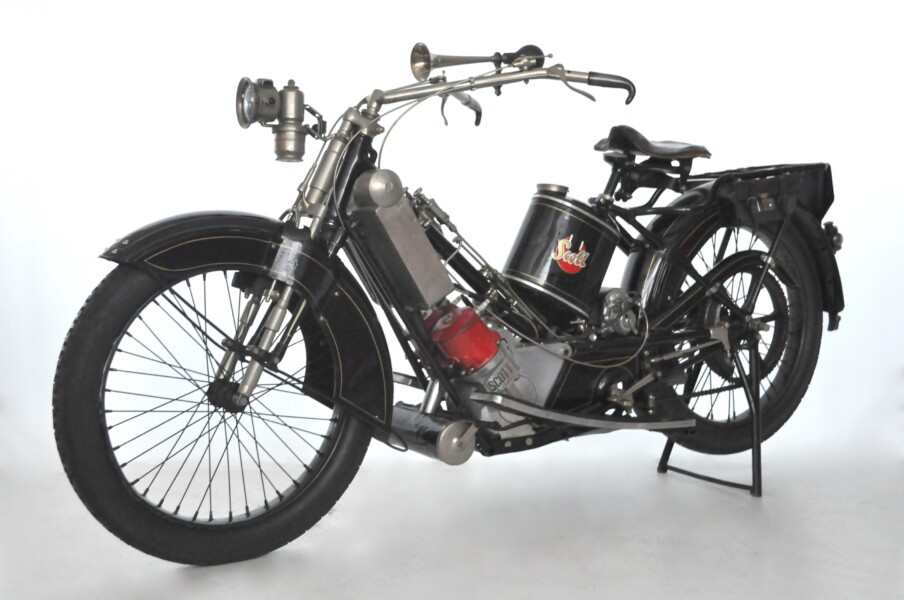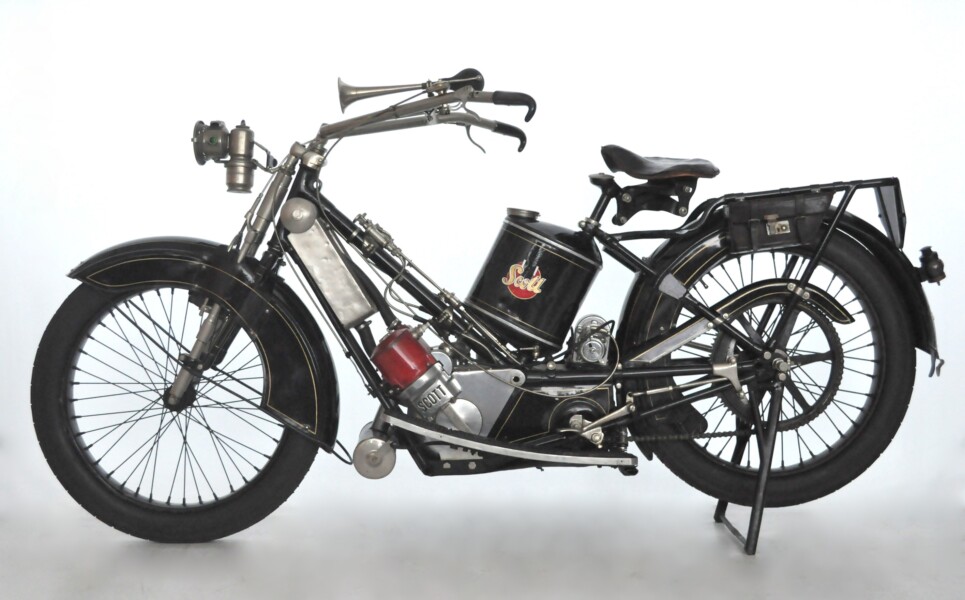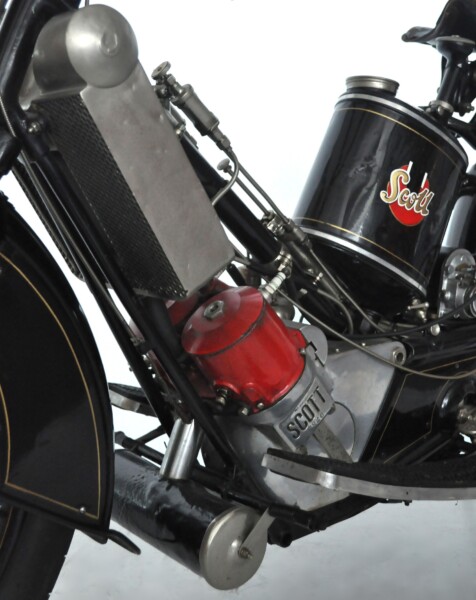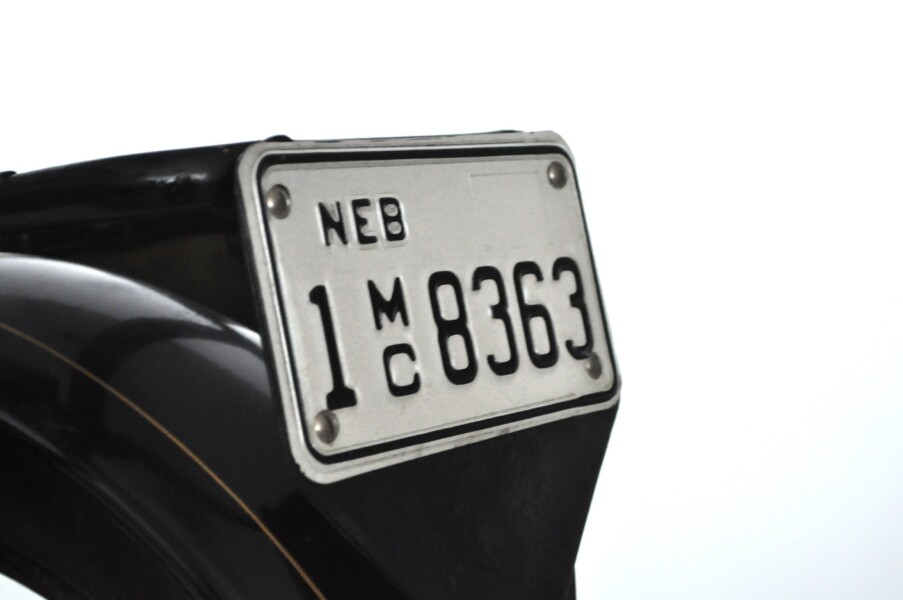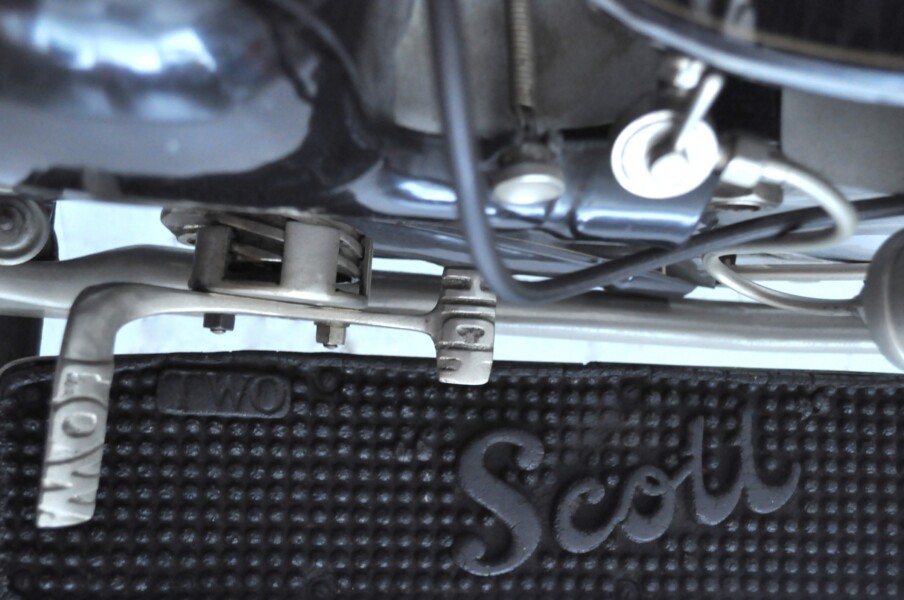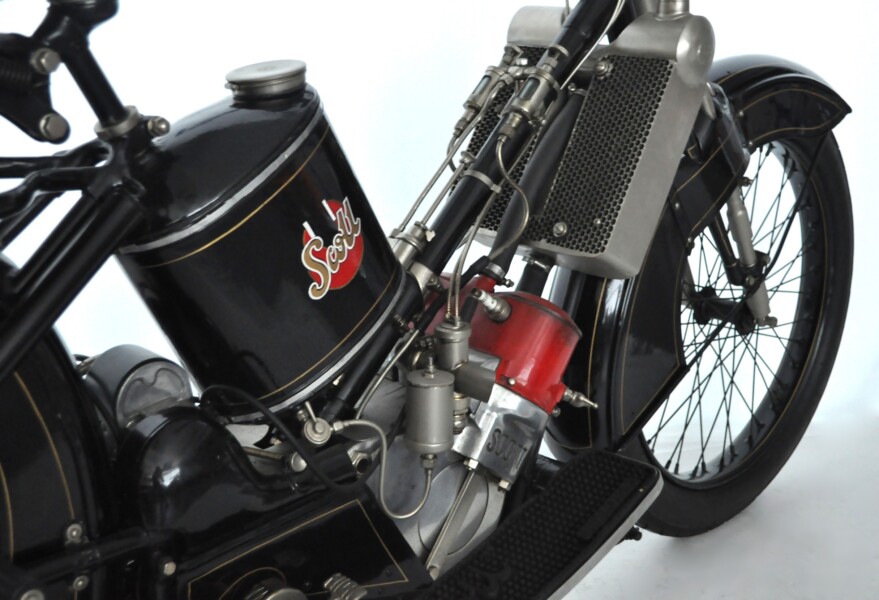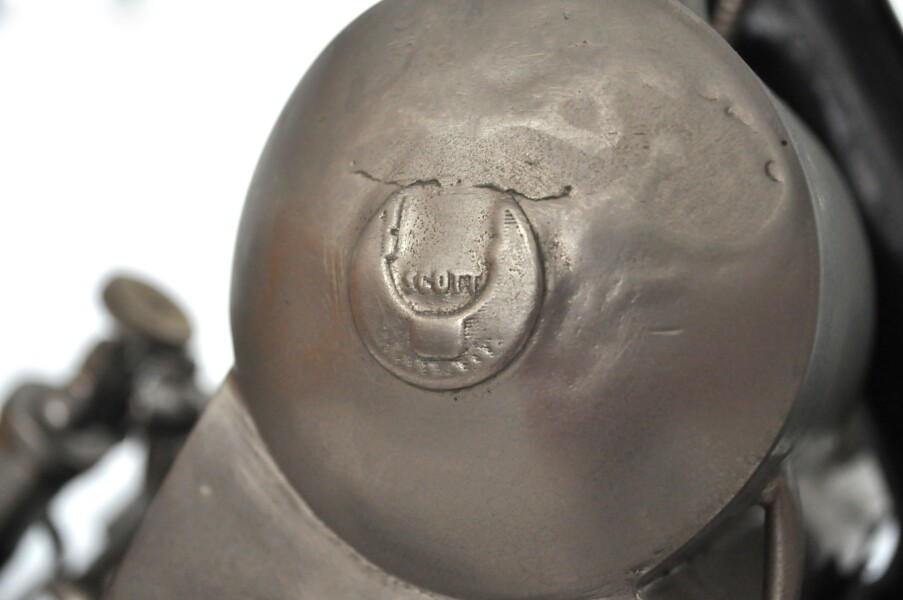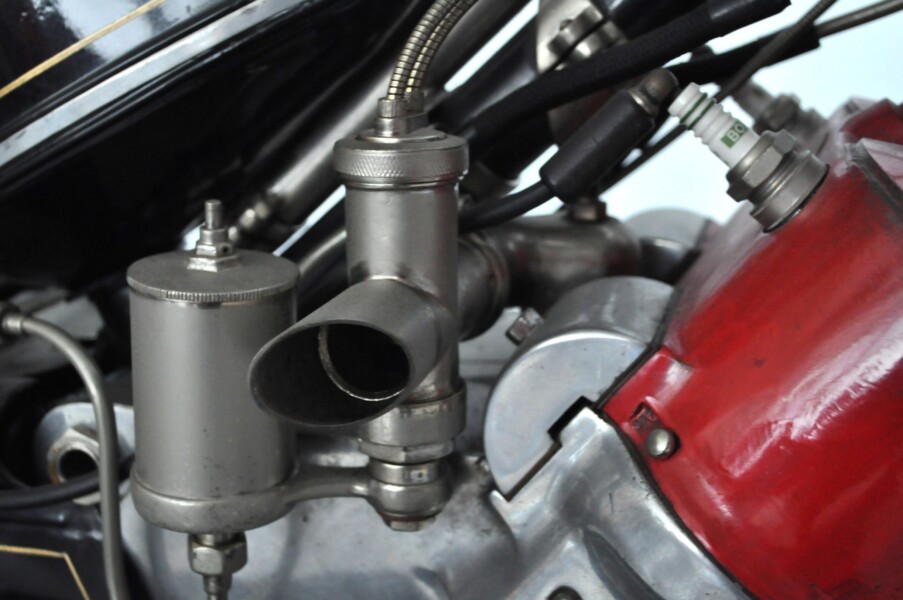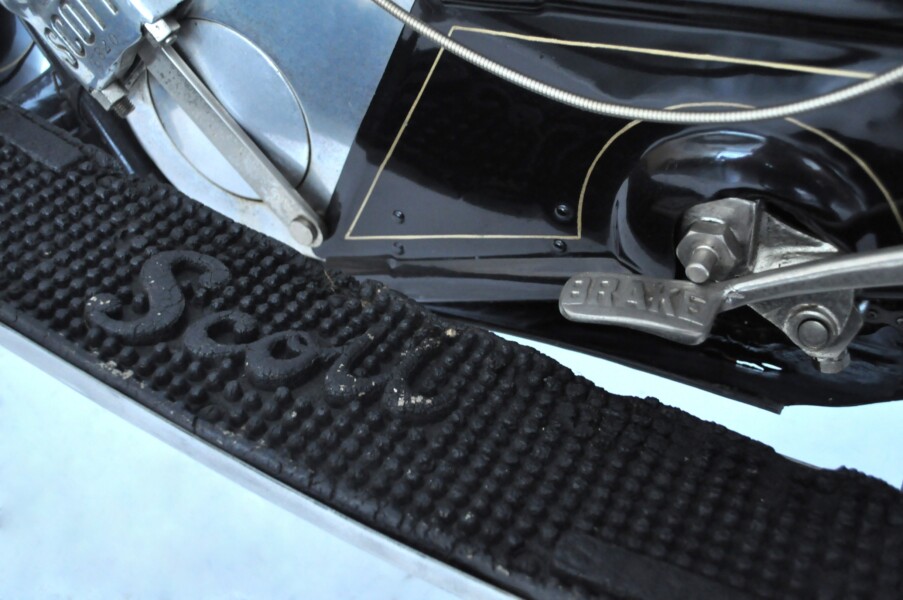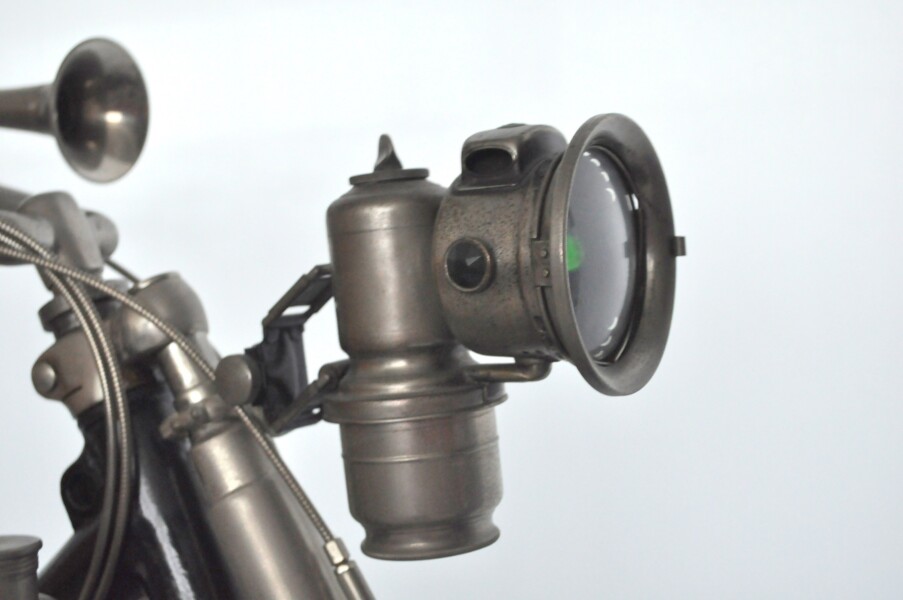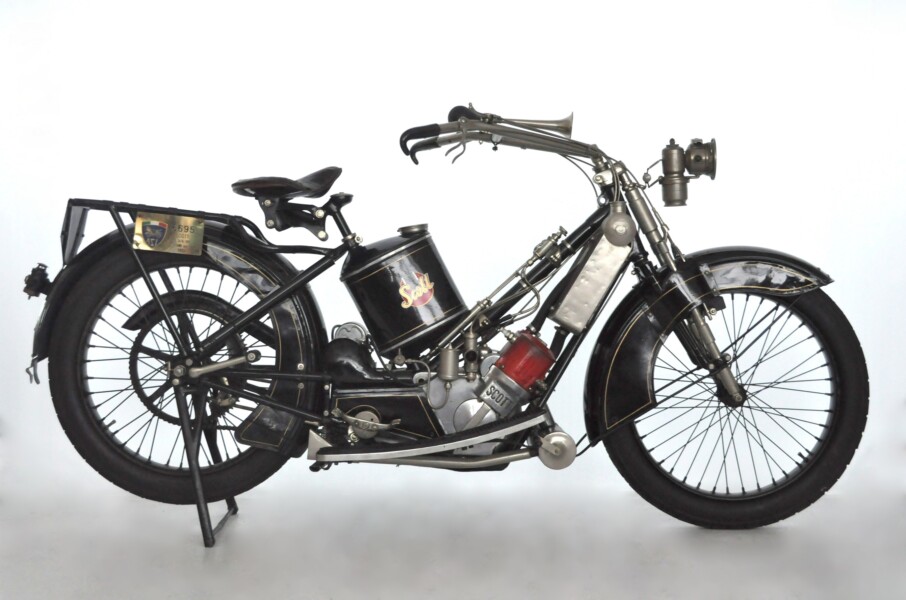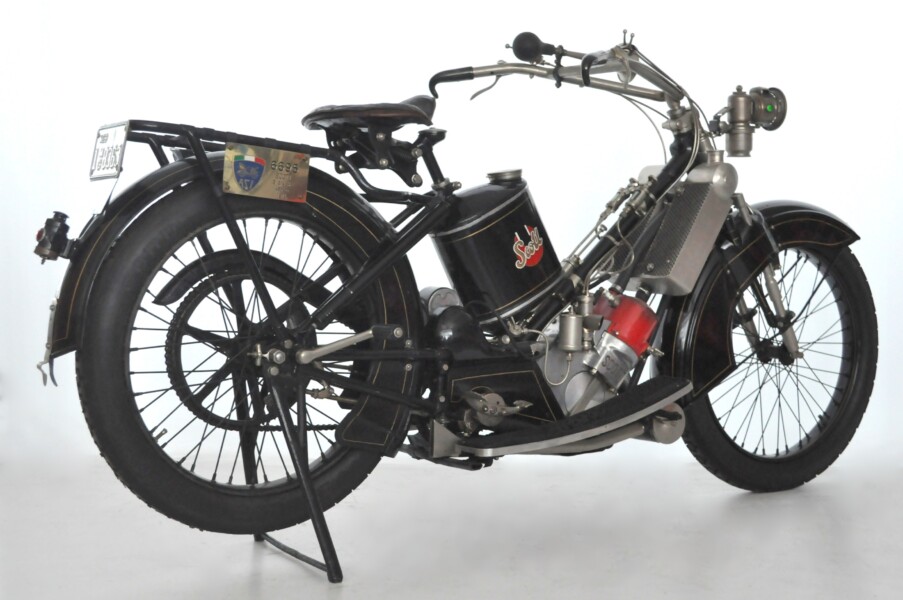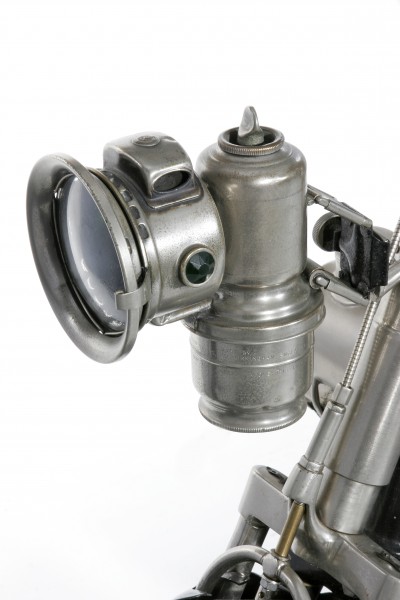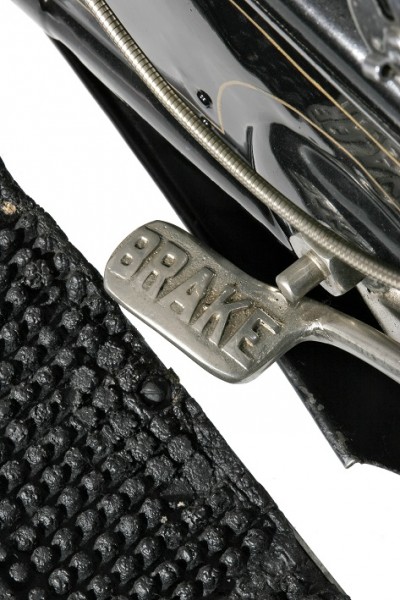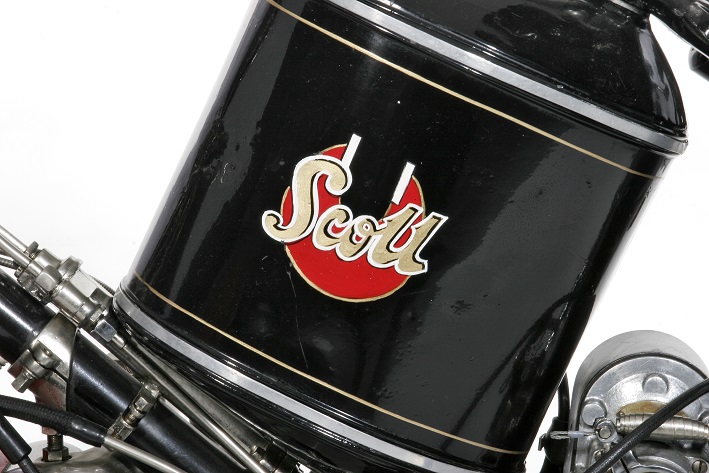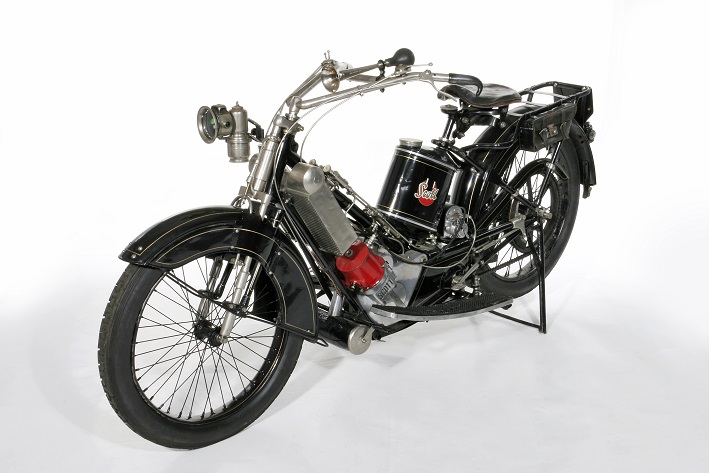Scott, 1914, 3 3/4 HP
Scott "3 3/4 HP", 1914, England
Alfred Scott popularized the water-cooled 2-stroke engine
The Scott kept at the Museo Nicolis is an unprecedented model that stands out for its innovation and design. Moved by a twin-cylinder 2-stroke 486cc engine, it in fact features several technical refinements including water cooling, as is evident from the large radiator that characterizes it. Made before the "Great War," it is noted for many peculiarities that enhance its uniqueness: ignition is via pedal push forward instead of backward, the oil tank is located in the frame, the brake is located inside the rear crown, and, finally, lubrication is drip-feed on both cylinders.
Some construction choices such as the open triangle frame, allowing the bike to be used by a female audience, seemed to indicate a desire to target "quiet" users. Despite this, the Scott soon proved to be a fast and effective motorcycle, garnering numerous sporting successes. It reached 105 mph. It won the Tourist Trophy in 1912 and 1913. The Scott factory produced motorcycles from 1908 until the early 1970s.
HISTORICAL NOTES:
Although studies on the 2-stroke engine had already been carried out and applied by Dugald Clerk and Karl Benz, important were the innovations adopted on the 2-stroke engine by Alfred Angas Scott, originator of more than fifty patents, was one of the great English pioneers. Born in Bradford, but with Scottish ancestry, he grew up in a large family that besides him and his twin brother had 10 brothers.
The 2-stroke engine, born around 1880, will struggle to establish itself mainly because of its poor performance. It will be to the credit of Englishman Alfred Scott to popularize it, demonstrating its perfect efficiency and great possibilities, by adopting it for his motorcycles. He believed strongly in the potential of this engine but was also aware of its limitations and would therefore always seek to perfect it.
The inventor began to design engines as early as 1900, and from 1904 he began to introduce a series of innovations that would soon bring his engine to the forefront: he devised, for example, the fixed-jet carburetor that fed the cylinders through a rotating drum valve that regulated both air and mixture intake. In 1908 Scott made the famous twin-cylinder engine, which for many years would be considered one of the world's most perfect machines.
With a capital of 4,000 pounds, it was not until 1908 that the Scott Engineering Company was founded to produce motorcycles with engines of its own design, the key figures were Alfred Scott with his brother Charles (who put up the capital), Eric Myers and Augustus Phillip for the engine part, the bicycle part was entrusted to Royal Enfield instead.
The motorcycles produced were very successful in competitions, Scott would also participate in the 1910 Tourist Trophy for the first time with a 2-stroke racing motorcycle.
Alfred Scott would retire from the factory in 1918 but subsequent models would still follow the patterns he developed.
By 1931 Scott was in bad shape and an enthusiast of the brand, Albert Reynolds, bought some of the production putting it up for sale at first as Aero Scott and later as Reynolds Special.
Source: Clew Jeff, "The Scott Motorcycle - The Yowling Two-stroke," Haynes, 1990.
2024 Exhibited at MBE Motor Bike Expo, Veronafiere.

